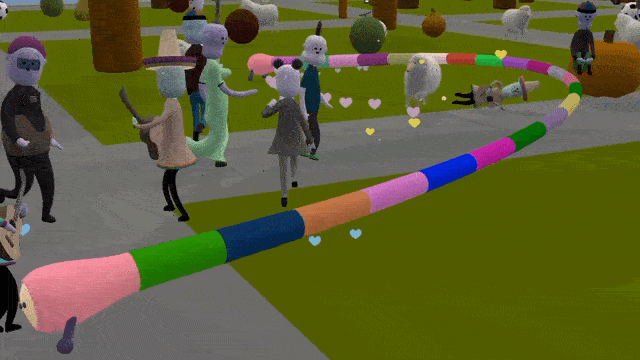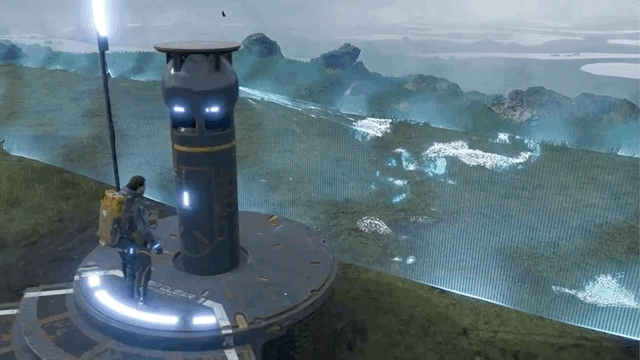On Valentine’s Day, I made gourmet mac and cheese and watched Woody’s heart get absolutely murdered.
Toy Story 4
I wept within the first five minutes. Every time Pixar announces another Toy Story, I’m convinced it will be the one that disappoints. And it hasn’t happened yet. Toy Story remains the only unblemished franchise.
I grew up with this fanciful world. The original Toy Story is one of those movies I can watch over and over. Toy Story 3’s release coincided with me and my sister leaving for college. My entire family was a mess when we left the theatre, seeing Andy say goodbye to his childhood as we prepared to do the same. Now watching Woody come to grips with the fact he has finally been replaced, I can’t help but feel a little pride for my old friend as he valiantly tries to fit in the new paradigm and ultimately realizes it is okay to move on, like his kid.
Note: I believe this is the first Toy Story to redeem the antagonist. It’s quite impactful in this case and reminded me of a similar choice in Kubo and the Two Strings.
The Three-Body Problem
I love sci-fi that makes me put down the book and take a moment to wrap my mind around the concept. Cixin Liu has written such a book. It has been interesting reading fiction that has been translated into English (I have also been reading The Witcher series by Andrzej Sapkowski). The style and themes certainly stand out from the monoculture of American media. I love the approach of liberal dialogue and sparse description in the early Witcher books. And love how Liu starts with grounded near future scientific concepts and ends with far-flung theories that border on fantasy. There’s a whole wide world out there.
Note: Can’t seem to find Liu’s short story The Wandering Earth in English yet. I guess I’ll have to settle for the film adaptation on Netflix.
Medical Police
I’m ashamed to say I watched every episode of this garbage. I laughed once. As I contemplated my poor decisions in life, I remembered the gem that is Danger 5. An absolute cinematic masterpiece from the minds that brought us Italian Spiderman.
Death Stranding, Again
When Hideo Kojima began discussing his latest project, he touted Death Stranding would create a new genre. He referenced a short story by Kōbō Abe, called The Stick, to explain:
“The stick is the first tool that mankind created to put distance between himself and bad things – to protect himself. The second tool mankind created is a rope. A rope is a tool used to secure things that are important to you… Most of your tools in action games are sticks. You punch or you shoot or you kick. The communication is always through these sticks… I want people to be connected not through sticks, but through what would be the equivalent of ropes.”
He calls it a “strand” game. His claim is presumptive, mainly because Death Stranding is not the first “strand” game. But you could say Kojima has canonized the genre.
Death Stranding is a single-player game with asynchronous multiplayer. You will never see another human-controlled character, but other players’ actions will impact your game and vice versa. The most notable example of a game utilizing this mechanic is Demon’s Souls.
This punishing dark fantasy RPG is also a solitary adventure. However, as the player creeps through the grim landscape, they will stumble upon bloodstains on the ground: traces of players that have gone before and died. These death-marks will show the player a phantom of the deceased and the seconds that lead up to their demise, which may offer clues for the player’s own survival. Other adventurers can also leave written messages that are propagated to other game worlds. These ranged from warnings, hints, to outright lies that lead to destruction. This outside influence on the player’s solo campaign culminates in phantom invasions where a player intrudes on another game world to slay its player for personal gain. Demon’s Souls fosters some cooperation between solo players, but more often than not, trickery and outright antagonism rule the day. FromSoftware continues to refine this unique player interaction with its lauded line of “souls” games.
Let me introduce you to Noby Noby Boy. Created by Keita Takahashi (of Katamari Damacy fame), this single-player PS3 exclusive revolves around the eponymous Boy, a quadrupedal worm-thing, which players try to stretch as far as they can in increasingly inventive ways. The game on its face is simple and… weird, but it has a fascinating meta-game. Every meter Boy is stretched, also stretches Girl which is another worm-thing in space.
There is only one Girl total for the entire player base of Noby Noby Boy. All the players stretching their Boys contribute to stretching out Girl. The goal, as a community, is to stretch Girl from earth all the way across the solar system. The actual real word distance. Noby Noby Boy launched on February 19, 2009. By the 23rd, players had stretched Girl to the moon. Then it took SIX WHOLE YEARS to reach Pluto. Each planet reached unlocked a new area for players to explore and stretch in with Boy. The game finally “ended” 2489 days after the release of the game when Girl was stretched all the way back to the sun and unlocked a time capsule letter for all the players to read. If this isn’t the definition of a “strand” game, I don’t know what is.
Note: Demon’s Souls, Noby Noby Boy, and Death Stranding are all Playstation console exclusives.
Death Stranding is a lonely experience at the start. Trudging kilometers over empty terrain from one destination to the next with orders to “connect humanity.” You do this by bringing settlements and other facilities onto the “chiral network” (read futuristic internet).
The player initially only has their own two feet, ladders and ropes to traverse the arduous landscape. Gradually they are given the capabilities to build permanent bridges, shelters, roads, and vehicles. These quality of life improvements are expensive though, especially the roads, costing thousands of kilos of materials. You can build all these things yourself; it only takes time and perseverance.
But you are not meant to.
As soon as the player connects a region to the chiral network, the landscape changes. Roads are paved, bridges arch over impassable rivers, ladders are laid across crevasses. These join the structures you have already built in the game world, and they’re here thanks to players who have come before you.
Players work together to rebuild ruined highways which significantly speeds up travel across the game world, reminiscent of the player collaboration in Noby Noby Boy.
Death Stranding tracks every structure built by players and allows them to bleed into other instances of the game. When players encounter a visiting structure, they can like it (yes, à la Facebook) which raises the score of the player who built it. Players can also donate their excess materials to the community and help those who need just 80KG more of ceramics to finish a stretch of road. Death Stranding even tracks the paths players take across untamed terrain. If enough players tread the same route, it becomes a worn footpath.
The world of Death Stranding changes according to the whims of the player community which makes each individual play-through unique thanks to the randomness of human behavior. I haven’t even covered how players can leave each other messages (similar to Demon’s Souls) or how your lost cargo appears in other players’ worlds which they can then return. All the interaction between the players in this solo game leads to a dynamic world, but more importantly, it serves the thesis of Death Stranding: connection.
Kojima was explicit that his next game would depreciate the importance of combat, less “stick” mechanics. Most combat in Death Stranding is defensive and often a last resort. The player is encouraged to run when they can, to focus on their deliveries and building infrastructure that will benefit the community at large. Lethal weapons aren’t even introduced until halfway through the game.
Instead, through gameplay, asynchronous multiplayer, in-game emails and hundreds of essays, Death Stranding preaches the gospel of the “rope.” Death Stranding rewards collaboration and cultivation of community. The social commentary is blatant, and by weaving it into the gameplay, it allows players to participate in the philosophy presented. And I think that is neat.













